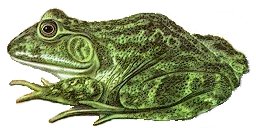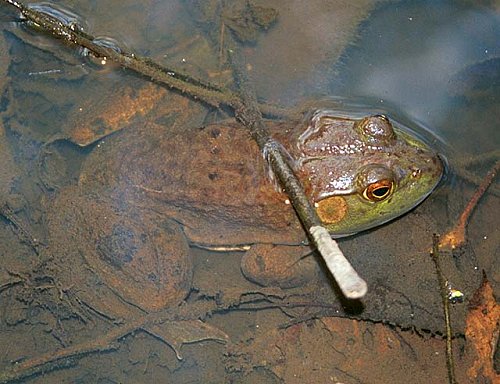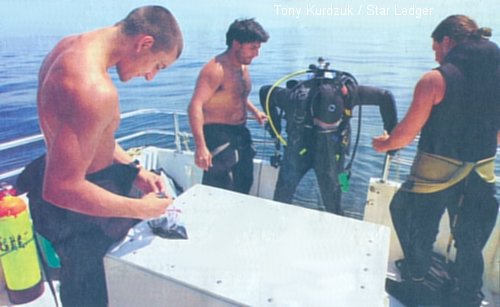Bullfrog

Rana catesbeiana
Size: to 6"
Habitat: prefers larger bodies of water
Notes: This big frog will eat almost anything that moves. They have been known to catch and eat birds.


Green frog (right) is similar but smaller. Neither of these frogs is likely to stray too far from water.

